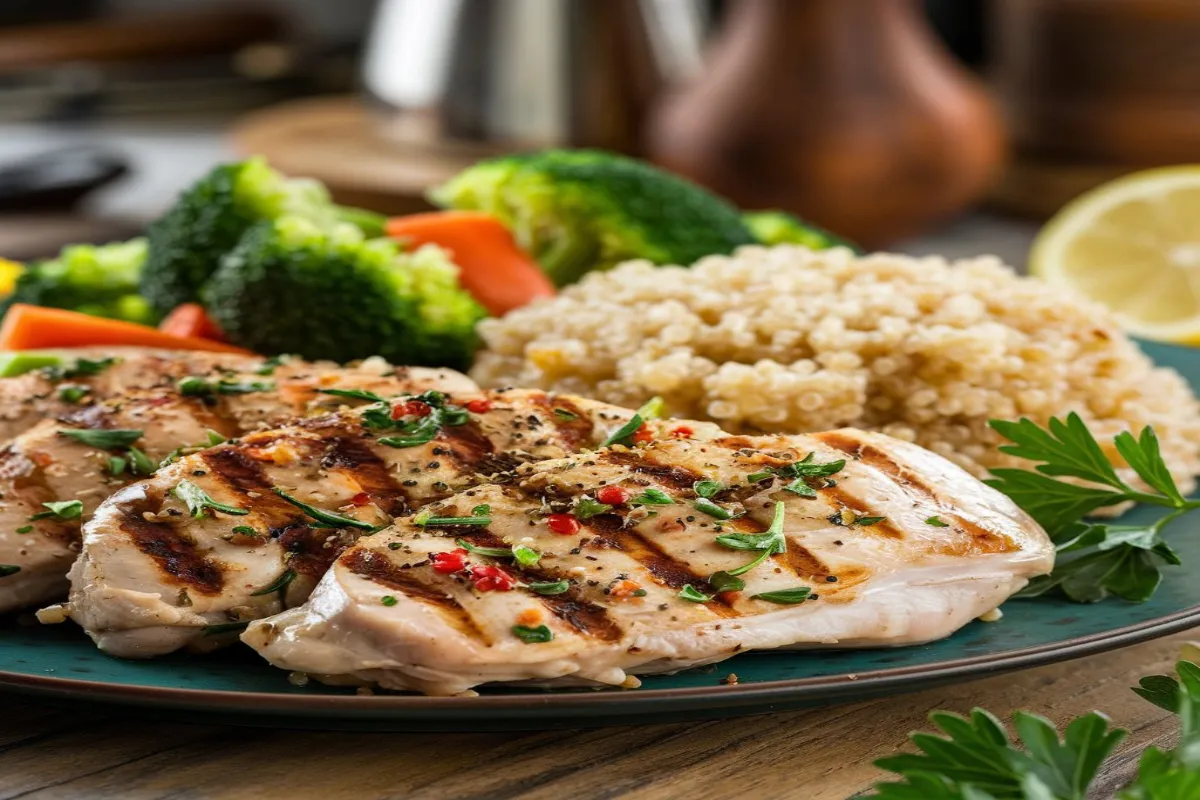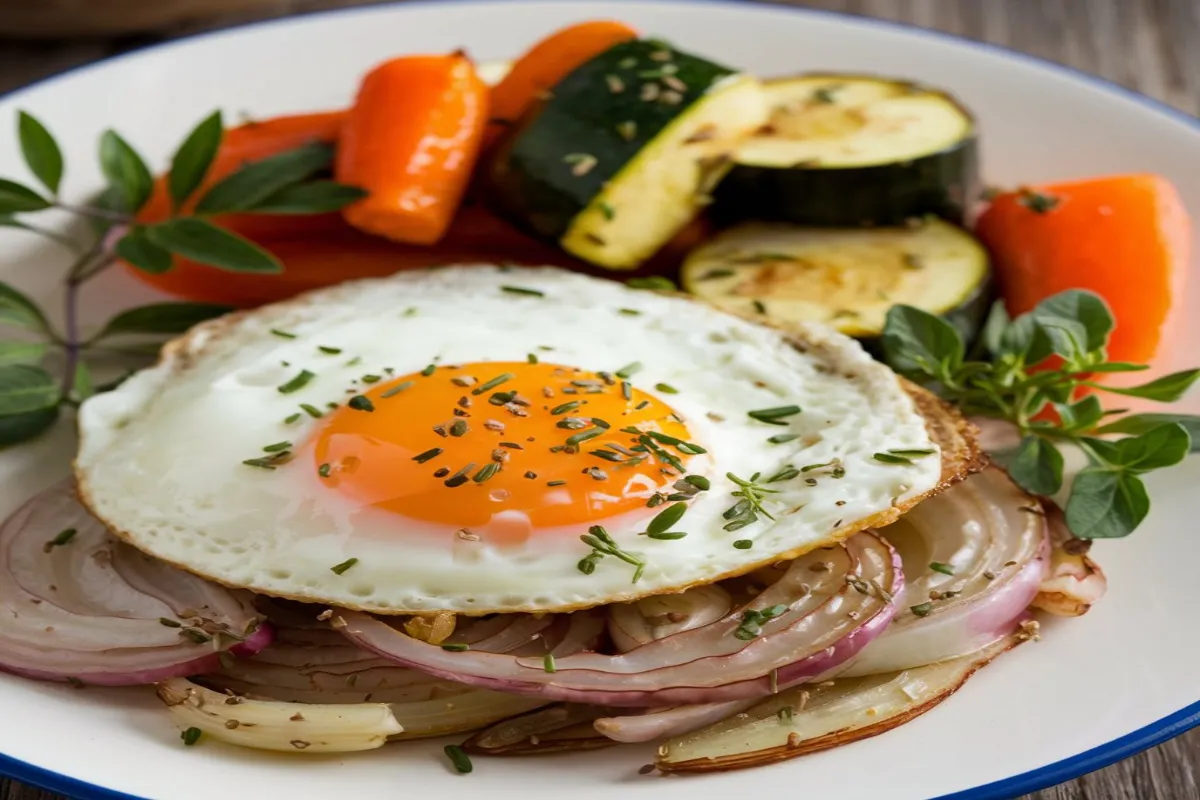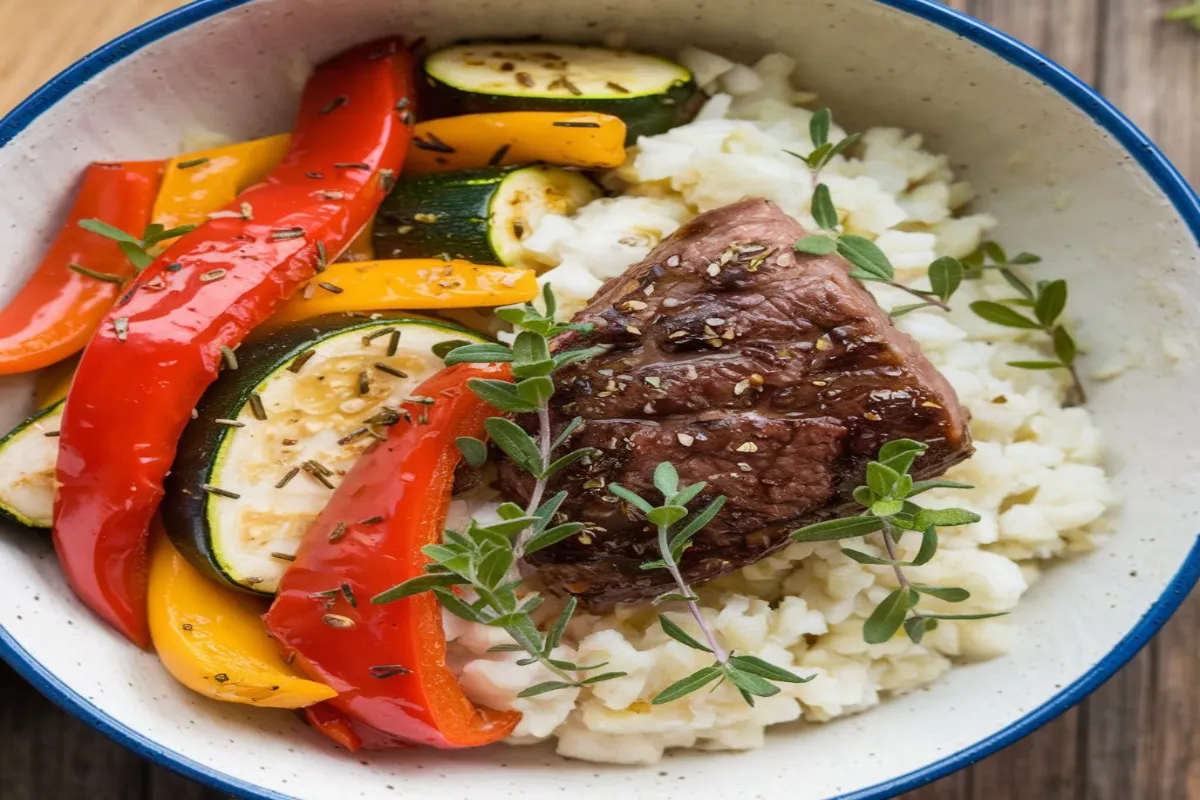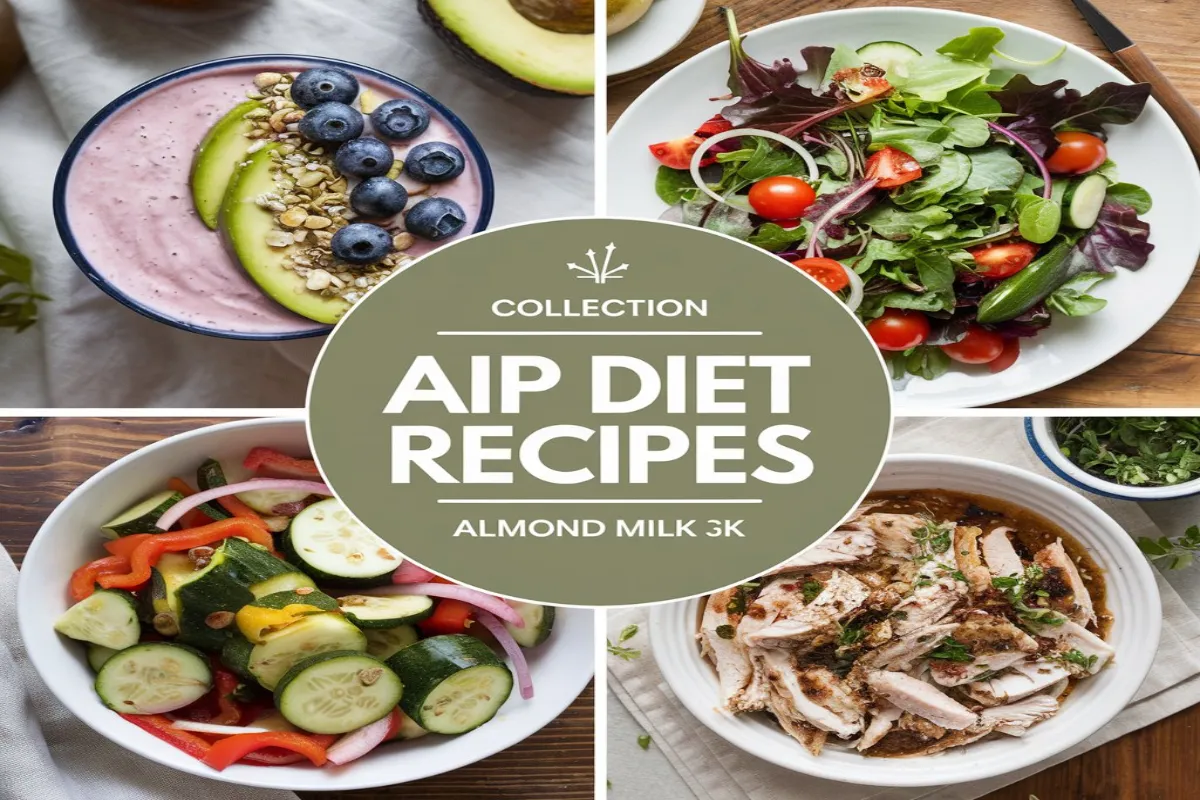The Autoimmune Protocol (AIP) Diet is a powerful tool for managing autoimmune diseases by reducing inflammation and healing the gut. In this guide, we explore the essential components of the AIP diet and provide a variety of AIP diet recipes to help you follow the protocol without feeling restricted.
Whether you’re in the elimination phase or reintroducing foods, following AIP diet recipes ensures you’re eating nutrient-dense, anti-inflammatory meals that support your health. These recipes eliminate common inflammatory triggers like grains, dairy, and nightshades, focusing instead on whole foods that nourish the body.
What is the AIP Diet?
The AIP diet is a variation of the Paleo diet designed specifically for those with autoimmune diseases. It eliminates foods that are known to cause inflammation, focusing on nutrient-dense, anti-inflammatory ingredients. While similar to the Paleo diet, the AIP diet is more restrictive, especially during the elimination phase.
Key Goals of the AIP Diet:
- Reduce inflammation
- Support the gut and improve digestion
- Calm the immune system
- Reduce the risk of autoimmune flare-ups
- Promote nutrient intake
The protocol is divided into two main phases: the elimination phase and the reintroduction phase. Each phase plays a crucial role in identifying foods that trigger inflammation and managing autoimmune symptoms.
AIP Diet Phases
The Elimination Phase
The elimination phase is the first step in the AIP diet, where you remove all foods that can potentially cause inflammation or disrupt gut health. This includes:
- Nightshades: Tomatoes, potatoes, peppers, and eggplant
- Grains: Wheat, corn, rice, oats, etc.
- Dairy: Milk, cheese, yogurt
- Legumes: Beans, lentils, soy
- Nuts and Seeds: Including seed oils like canola and sunflower
- Processed Foods: Any foods with additives, preservatives, and refined sugars
- Eggs
- Coffee, chocolate, and alcohol
The elimination phase typically lasts between 30 and 60 days. This gives the immune system time to calm down and allows the gut to begin healing. After this period, the reintroduction phase begins.
The Reintroduction Phase
Once you’ve completed the elimination phase, you gradually reintroduce eliminated foods back into your diet to identify which ones trigger your symptoms. This process involves introducing one food group at a time, allowing a few days to observe any reactions before moving on to the next.
For example, you might start by reintroducing eggs and eating them for three days, tracking any reactions like joint pain, fatigue, or digestive discomfort. If you notice symptoms, that food is likely a trigger and should be avoided. If no symptoms appear, you can continue eating that food and move on to reintroduce another.
 Essential Ingredients for AIP Diet Recipes
Essential Ingredients for AIP Diet Recipes
The AIP diet requires creativity in the kitchen, but with the right ingredients, you can craft meals that are both delicious and compliant with the protocol.
Common AIP-Friendly Ingredients:
- Coconut Products: Coconut milk, oil, and flour are staples, replacing dairy and grain-based products.
- Bone Broth: Rich in collagen and minerals, it’s excellent for gut healing and serves as a base for many soups and stews.
- Cassava Flour: A versatile flour made from the cassava root, used for baking and cooking.
- Sweet Potatoes: A complex carbohydrate source, adding starchy richness to meals.
- Healthy Fats: Avocado oil, olive oil, and coconut oil are key fats used in AIP cooking.
- Herbs and Spices: Ginger, turmeric, garlic, and rosemary are popular for flavoring dishes without relying on nightshades.
AIP Breakfast Recipes
Breakfast can be challenging on the AIP diet since traditional staples like eggs and grains are off-limits. However, with a bit of creativity, you can still enjoy satisfying and nutritious meals.
1. Sweet Potato and Turkey Hash
This hearty breakfast hash is both nutrient-dense and satisfying, combining sweet potatoes and ground turkey for a delicious start to your day.
- Ingredients:
- 1 large sweet potato (peeled and diced)
- 1 lb ground turkey
- 1 tbsp coconut oil
- Sea salt and pepper (optional)
- Fresh herbs like thyme or rosemary
- Instructions:
- Heat the coconut oil in a skillet over medium heat.
- Add the diced sweet potatoes and cook until soft, about 10 minutes.
- Add the ground turkey, breaking it up and cooking until browned.
- Season with sea salt, pepper, and fresh herbs.
2. AIP Smoothie
This simple AIP smoothie is packed with nutrients and makes a great on-the-go breakfast.
- Ingredients:
- 1 cup coconut milk
- 1 banana
- 1 cup spinach
- 1 tbsp collagen powder
- 1/2 cup frozen berries (blueberries or strawberries)
- Instructions:
- Blend all ingredients until smooth.
- Pour into a glass and enjoy immediately.
AIP Lunch Recipes
Lunch is an important meal to pack with nutrients to sustain energy throughout the day. These AIP lunch recipes are quick, easy, and full of flavor.
1. Avocado Tuna Salad
This AIP-friendly tuna salad replaces traditional mayonnaise with mashed avocado for a creamy, nutritious lunch option.
- Ingredients:
- 1 can tuna (in water, drained)
- 1 ripe avocado (mashed)
- 1 tbsp lemon juice
- 1 tbsp olive oil
- Sea salt and pepper
- Instructions:
- Mix the mashed avocado, lemon juice, and olive oil in a bowl.
- Add the drained tuna and mix until combined.
- Season with sea salt and pepper.
2. Turkey and Kale Soup
This hearty soup is perfect for colder days and provides a nourishing, AIP-compliant meal rich in vitamins and minerals.
- Ingredients:
- 1 lb ground turkey
- 4 cups bone broth
- 2 cups chopped kale
- 1 sweet potato (peeled and diced)
- 1 onion (diced)
- 2 cloves garlic (minced)
- Instructions:
- Brown the turkey in a large pot over medium heat.
- Add the onion and garlic, cooking until softened.
- Pour in the bone broth and add the sweet potato and kale.
- Simmer for 20 minutes, until the vegetables are tender.
AIP Dinner Recipes
Dinner is a great opportunity to enjoy more complex dishes that showcase the richness of AIP-friendly ingredients.
1. Maple Rosemary Chicken
This flavorful AIP dinner recipe combines savory rosemary and sweet maple syrup for a delicious one-pan meal.
- Ingredients:
- 4 chicken thighs (skin on)
- 2 tbsp maple syrup
- 2 tbsp olive oil
- Fresh rosemary (chopped)
- Sea salt and pepper
- Instructions:
- Preheat the oven to 375°F.
- In a small bowl, mix the olive oil, maple syrup, and rosemary.
- Place the chicken thighs on a baking sheet and rub them with the maple mixture.
- Roast for 35-40 minutes until the chicken is fully cooked and the skin is crispy.
2. Beef Stir-Fry with Coconut Aminos
This AIP beef stir-fry is soy-free, using coconut aminos to bring out a savory, slightly sweet flavor.
- Ingredients:
- 1 lb grass-fed ground beef
- 1 cup broccoli florets
- 1 carrot (thinly sliced)
- 1/4 cup coconut aminos
- 1 clove garlic (minced)
- 1 tbsp coconut oil
- Instructions:
- Heat the coconut oil in a skillet over medium heat.
- Add the ground beef and cook until browned.
- Add the garlic, broccoli, and carrot, cooking until tender.
- Stir in the coconut aminos and cook for an additional 5 minutes.
AIP Snacks and Desserts
1. Plantain Chips
These crispy AIP plantain chips are a perfect snack for when you’re craving something crunchy.
- Ingredients:
- 2 green plantains (sliced thinly)
- 2 tbsp coconut oil
- Sea salt
- Instructions:
- Preheat the oven to 375°F.
- Toss the plantain slices in coconut oil and lay them on a baking sheet.
- Bake for 15-20 minutes, flipping halfway through until golden and crispy.
- Sprinkle with sea salt and let cool.
2. Coconut Milk Ice Cream
This dairy-free AIP dessert is creamy, sweet, and incredibly satisfying.
- Ingredients:
- 1 can full-fat coconut milk
- 2 tbsp honey
- 1 tsp vanilla extract
- Instructions:
- Mix the coconut milk, honey, and vanilla extract.
- Pour the mixture into an ice cream maker and churn until
churned and thickened. If you don’t have an ice cream maker, pour the mixture into a shallow container and freeze. Stir every 30 minutes until firm to achieve a creamy texture.
AIP Meal Planning and Prep Tips
Sticking to the AIP diet can be much easier if you plan ahead and have meals prepped. Here are some practical tips to simplify the process:
Batch Cooking and Freezing
Preparing meals in bulk can save you a lot of time throughout the week. You can make large batches of dishes like soups, stews, or casseroles, and freeze individual portions. This way, you always have a ready-to-eat AIP meal on hand, which is especially helpful during busy days or autoimmune flare-ups.
- Tip: Freeze bone broth in ice cube trays so you can easily add a nutritious boost to any dish.
Stock Your Pantry
Keeping your pantry stocked with AIP staples like cassava flour, coconut oil, and coconut aminos makes it easier to throw together quick meals. Ensure you always have a few AIP-friendly proteins, vegetables, and healthy fats on hand to avoid resorting to non-compliant foods.
One-Pan Meals and Sheet Pan Dinners
Simplify your cooking with one-pan meals or sheet pan dinners. These types of meals allow you to cook everything together, reducing the number of dishes and making cleanup a breeze. Just arrange your protein and veggies on a pan, season them, and roast in the oven.
 Common Challenges of the AIP Diet and How to Overcome Them
Common Challenges of the AIP Diet and How to Overcome Them
While the AIP diet offers numerous health benefits, it’s not without its challenges. Here are some of the most common difficulties people face and how to address them.
Challenge 1: Limited Ingredient Choices
Solution: Get creative with substitutions. Instead of grains, try using cauliflower rice, spaghetti squash, or zucchini noodles. For breakfast alternatives to eggs, focus on sweet potato hash or AIP smoothies made with coconut milk and collagen peptides. The AIP diet encourages creativity and exploration of new ingredients.
Challenge 2: Social Situations and Dining Out
Solution: Plan ahead and communicate your dietary restrictions when dining out. Many restaurants are willing to accommodate specific dietary needs if you ask. You can also offer to bring your own AIP-friendly dish to gatherings or eat a small meal before attending an event to avoid hunger temptations.
Challenge 3: Reintroducing Foods
Solution: The reintroduction phase can be tricky, but keeping a food diary to track symptoms during this time is essential. Introduce one food at a time and give yourself a few days between each new food to monitor any reactions. Be patient, as it may take time to pinpoint which foods trigger your symptoms.
Nutritional Benefits of the AIP Diet
The AIP diet is a nutrient-dense way of eating that supports overall health and wellness. By focusing on whole, unprocessed foods and eliminating known irritants, it helps reduce inflammation and supports the healing of the gut lining.
Key Nutritional Benefits:
- Rich in Anti-Inflammatory Foods: Ingredients like coconut oil, leafy greens, and fatty fish help reduce chronic inflammation.
- Gut Health Support: Foods like bone broth and fermented vegetables (in moderation) help heal the gut lining and restore balance to gut bacteria.
- Nutrient-Dense: The AIP diet emphasizes whole foods packed with essential vitamins and minerals, providing the nutrients needed to support immune function and overall health.
Incorporating a variety of vegetables, proteins, and healthy fats ensures you get a balanced mix of macronutrients and micronutrients. For those dealing with autoimmune conditions, the anti-inflammatory properties of the diet are particularly beneficial.
Customizing the AIP Diet for Your Needs
The AIP diet can be modified to suit individual needs or preferences, whether you’re following a ketogenic approach, have histamine intolerance, or are trying to keep things budget-friendly.
1. Keto-AIP Diet
For those who want to combine the ketogenic diet with the AIP, it’s important to focus on high-fat, low-carb options that are also AIP-compliant. Foods like avocados, olive oil, coconut oil, and fatty cuts of meat will help you stay in ketosis while avoiding the AIP-restricted foods like nightshades and grains.
2. Low-Histamine AIP
If you have a histamine intolerance, you may need to avoid certain high-histamine foods that are allowed on the AIP diet, such as bone broth and fermented foods. Instead, focus on fresh meats and low-histamine vegetables like leafy greens and squash.
3. Budget-Friendly AIP
The AIP diet can be expensive, but there are ways to keep costs down. Focus on buying seasonal produce and ground meats, which are typically less expensive than other cuts. Cooking in bulk and freezing leftovers can also help you save both time and money.
Frequently Asked Questions (FAQs)
What is the AIP diet?
The Autoimmune Protocol (AIP) diet is a dietary approach designed to reduce inflammation and support immune system health in people with autoimmune diseases. It focuses on eliminating inflammatory foods and promoting gut health through nutrient-dense, whole foods.
What foods can you eat on the AIP diet?
On the AIP diet, you can eat:
- Meat and fish (preferably grass-fed and wild-caught)
- Vegetables (except nightshades like tomatoes, potatoes, and peppers)
- Fruits (in moderation)
- Coconut products (milk, oil, flour)
- Bone broth
- Fermented foods (in moderation)
How long does the elimination phase last?
The elimination phase typically lasts 30-60 days. This allows the body time to heal and reduce inflammation before reintroducing foods.
Is coffee allowed on the AIP diet?
No, coffee is not allowed during the elimination phase of the AIP diet, as it can be inflammatory for some individuals. Herbal teas, like chamomile or peppermint, are good alternatives.
Can you eat fruit on the AIP diet?
Yes, you can eat fruit on the AIP diet, but it’s recommended to eat it in moderation. Focus on low-glycemic fruits like berries and avoid dried fruits, which are higher in sugar.
 Conclusion
Conclusion
The AIP diet is a transformative tool for managing autoimmune conditions by addressing the root causes of inflammation and gut health issues. By removing common triggers and focusing on nutrient-dense foods, the AIP diet allows the body to heal and recover from autoimmune symptoms. Whether you’re starting your day with a hearty Sweet Potato and Turkey Hash or indulging in a homemade Coconut Milk Ice Cream, the AIP diet offers endless possibilities for delicious, healing meals.
With careful planning, meal prepping, and a positive approach to food reintroduction, you can enjoy the benefits of the Autoimmune Protocol while eating flavorful and satisfying meals.

